Roman Red: dying leather with madder roots
As someone described by students as a “Pliny fangirl”, it should come as no surprise that this blog once again was a result of my reading Pliny the Elder’s Natural History and my research into and translation of the Medicina Plinii. The plant madder called rubia in Latin was referred to as the “rubia with which hides are dyed or tanned.” This phrase was used in Pliny’s Natural History and the Medicina Plinii, and it made me curious as to what this would look like. 

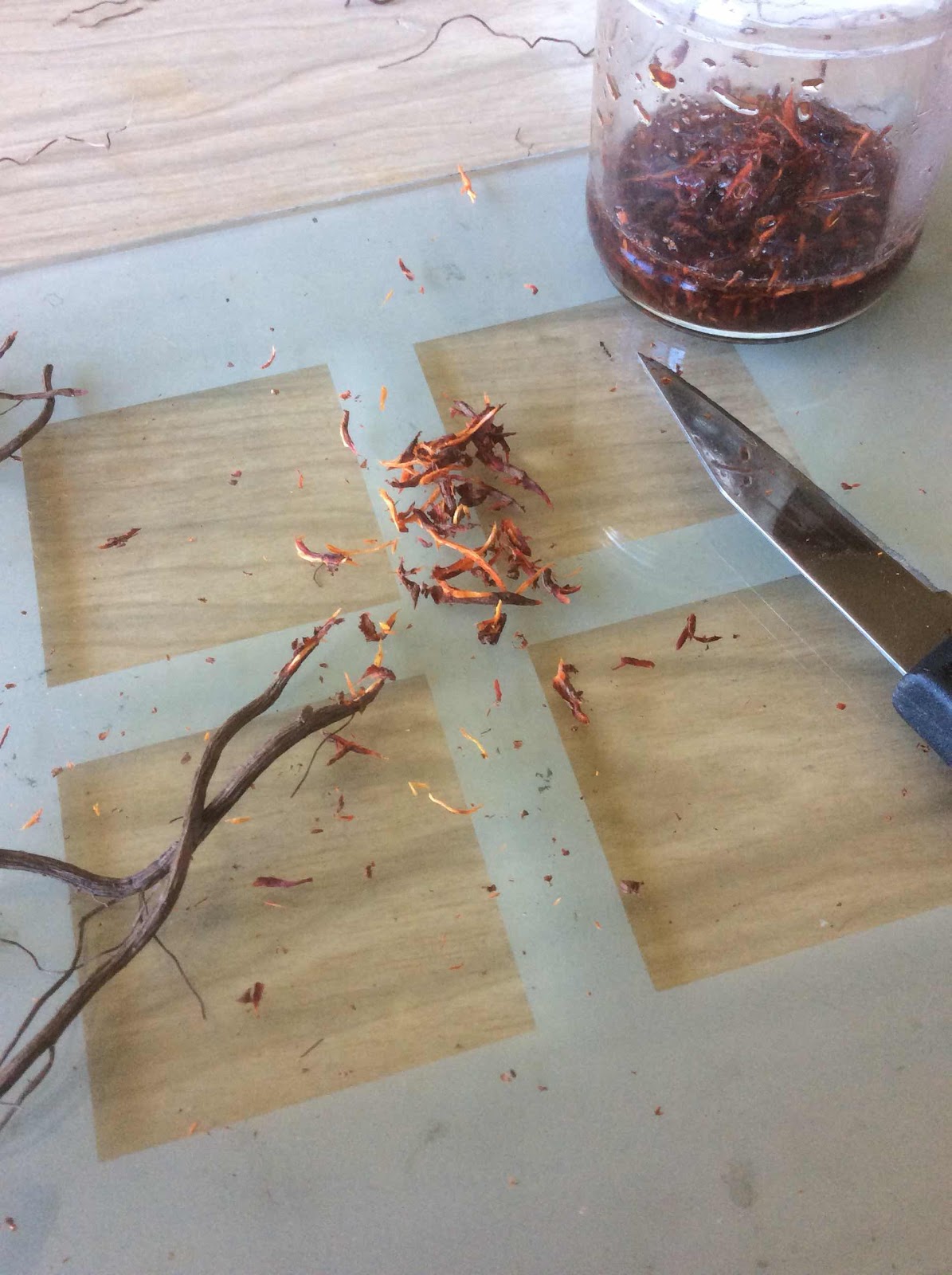
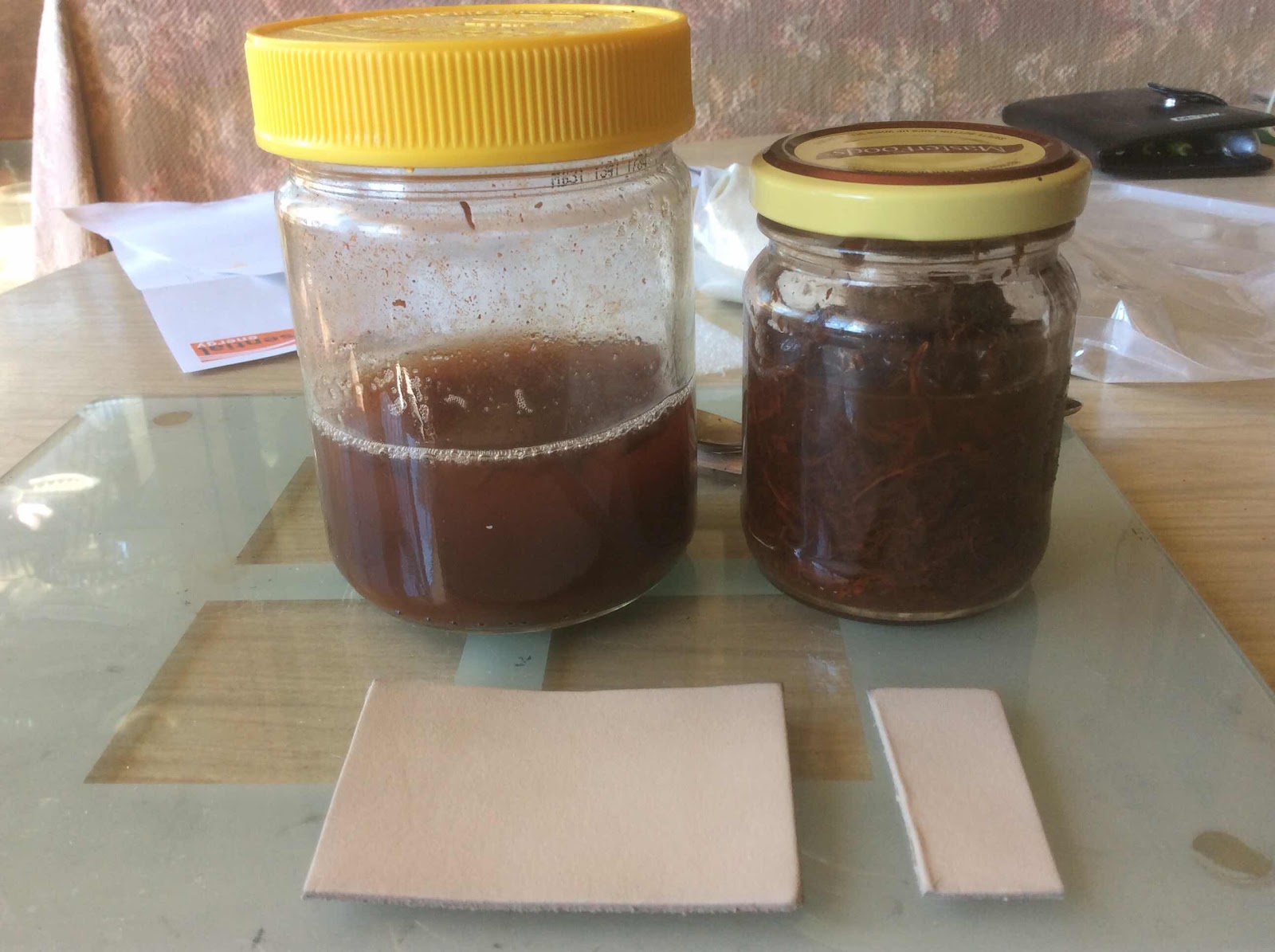
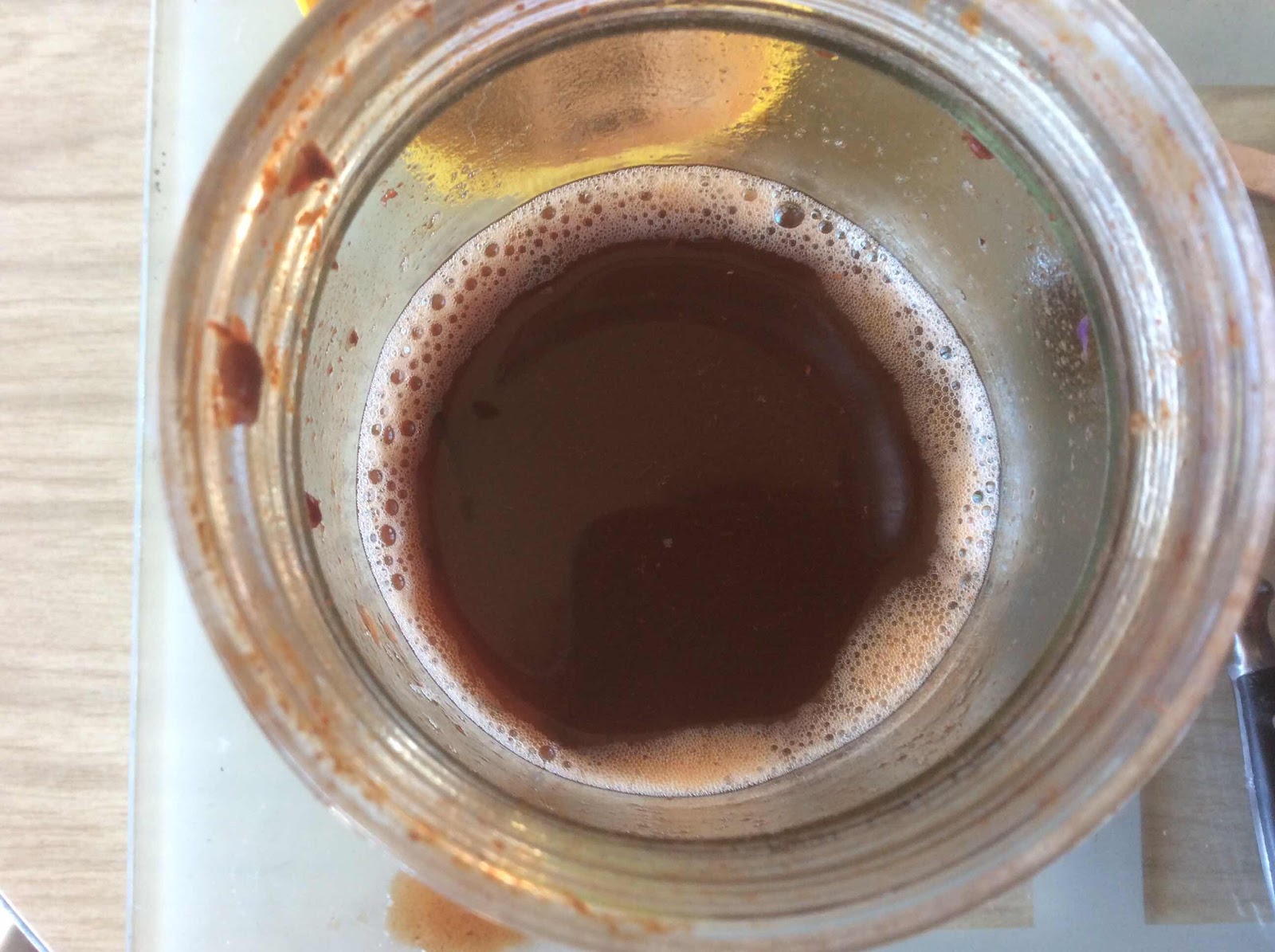
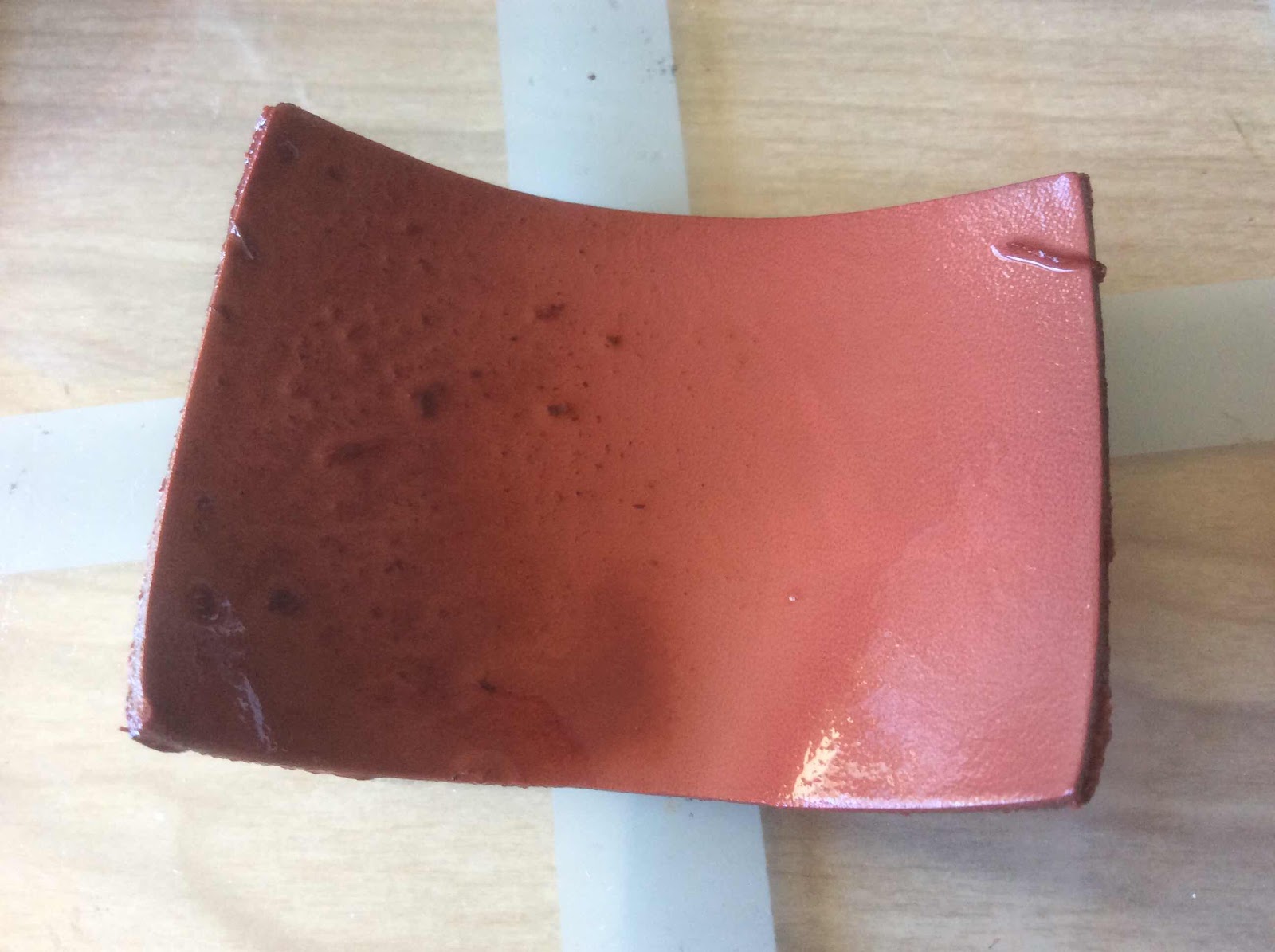




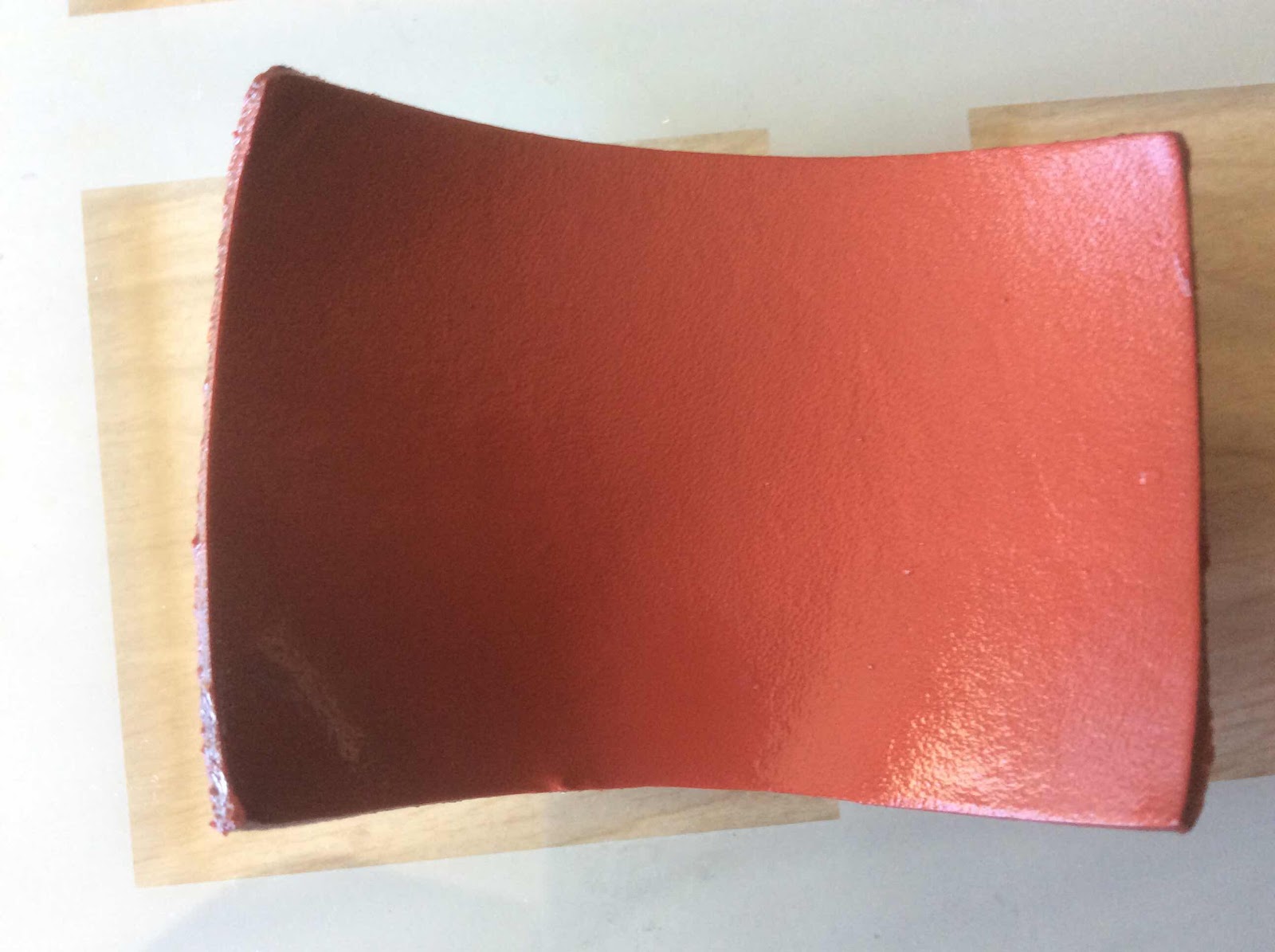
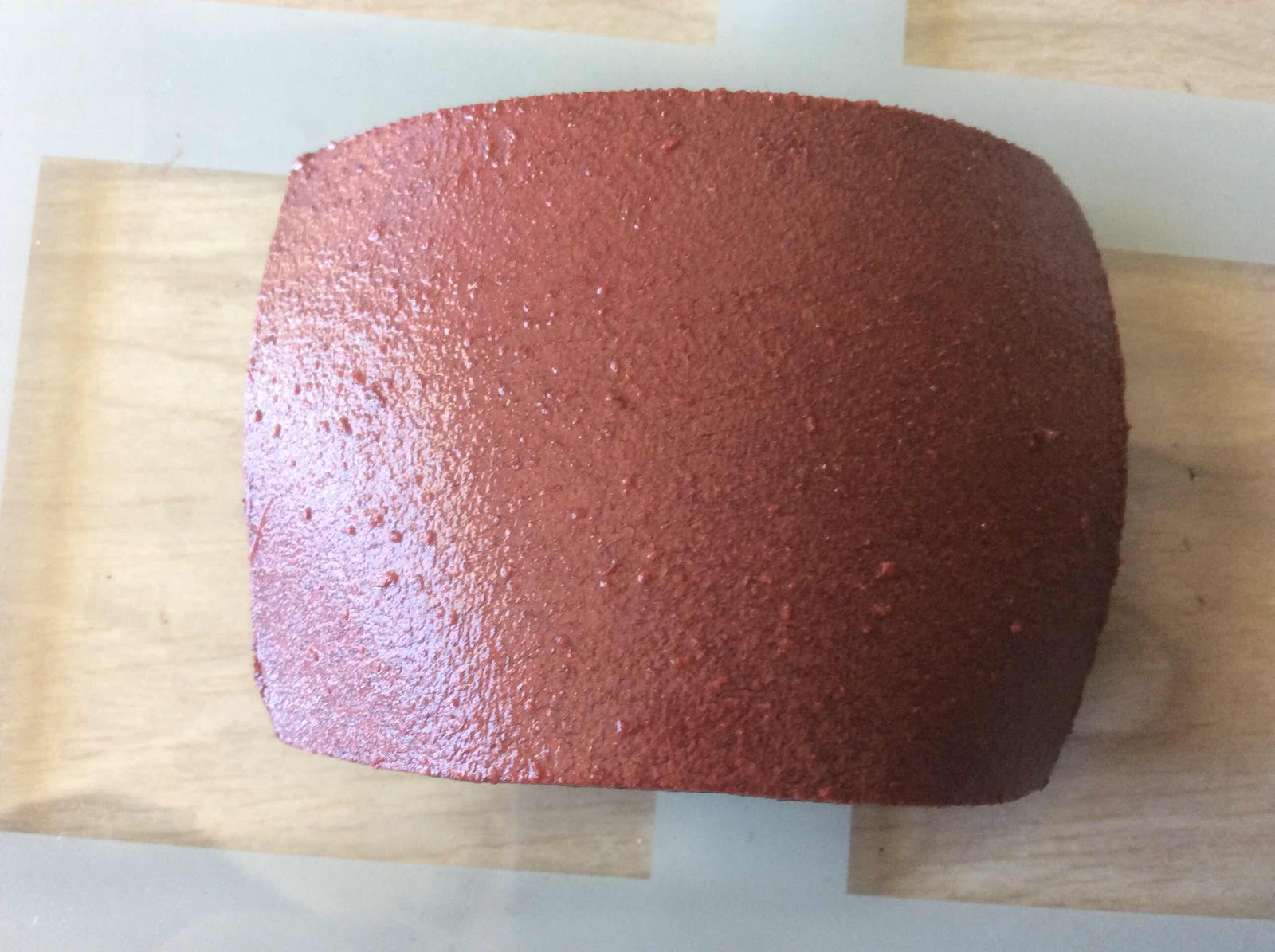

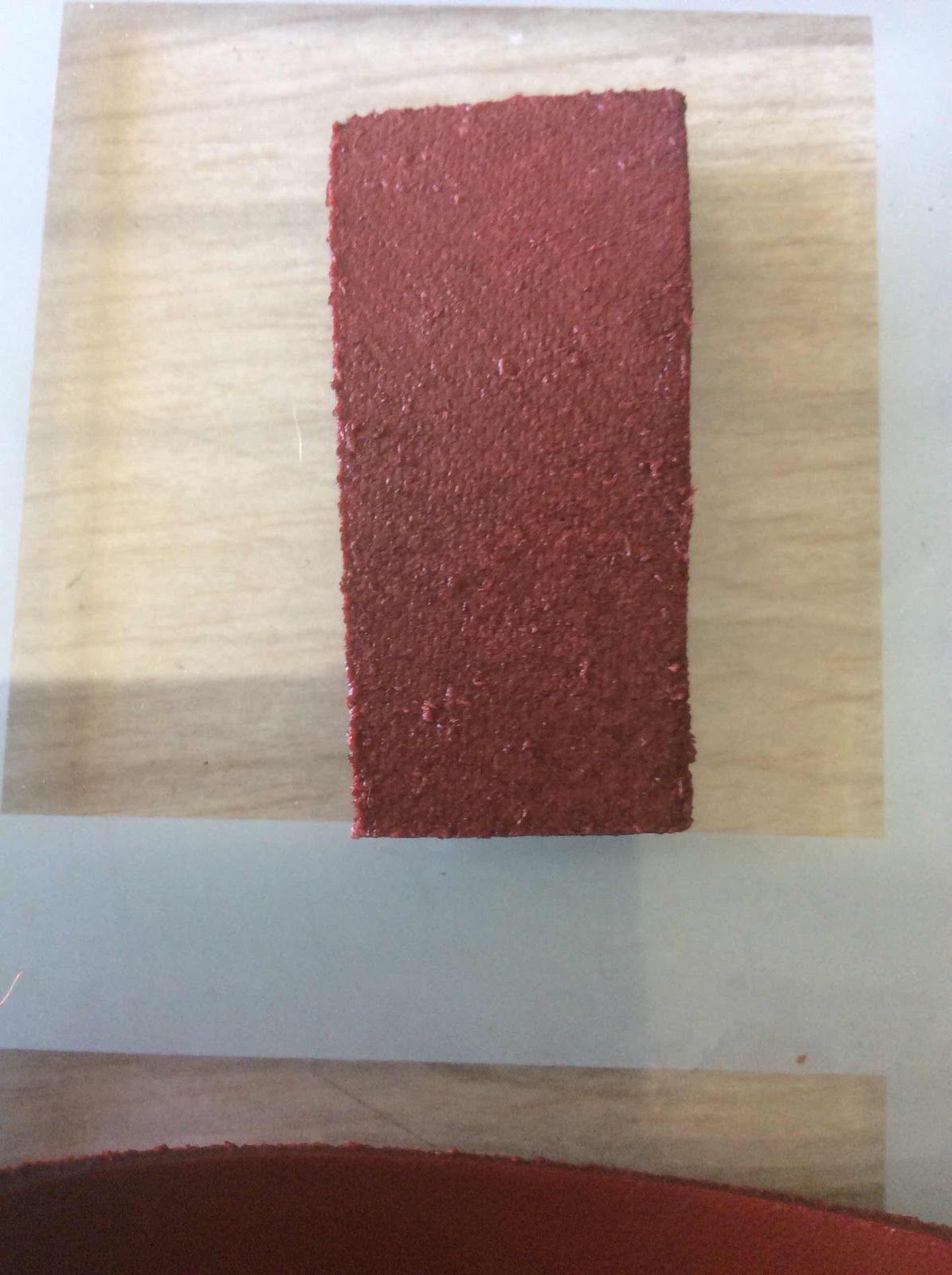
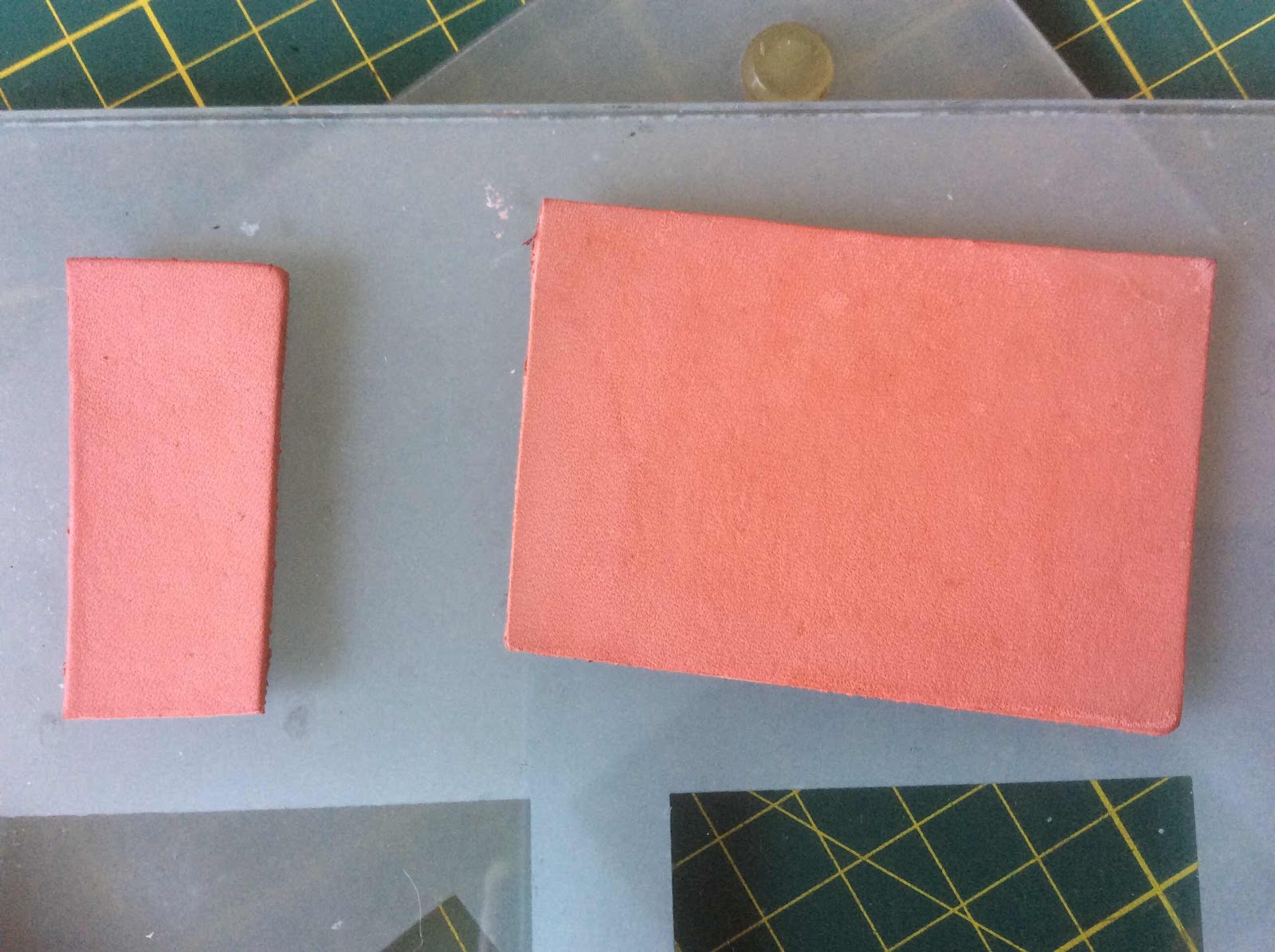
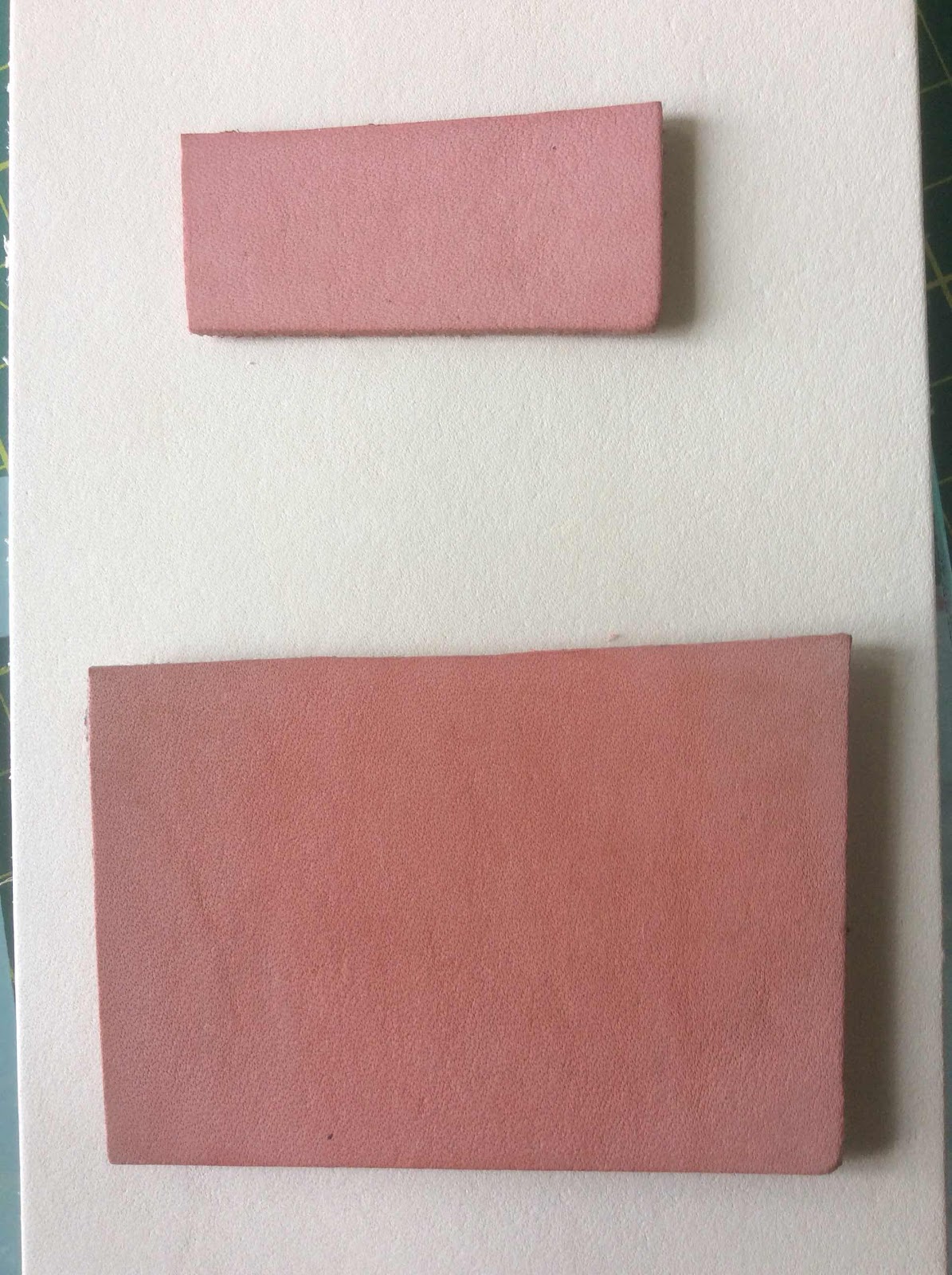

Rubia is one of those plants where we don’t have to spend a lot of time scratching our heads over its identification. Because of its use in dying there has been a constant use of it from antiquity to today which allows it to be identified with plenty of confidence as Rubia tinctorum, commonly called madder. This is handy because I could actually buy a madder plant online, which I did back in April last year and planted it in a large pot.
Madder plant in flower before I killed it.
Not having the greenest of thumbs, my little plant survived for only a bit over a year, but it grew well for a while before it died. This photo (above) was taken in February, but by August it was dead. Rather than mourn the loss, I immediately harvested the roots before they dried up to see what they looked like and how they could be used.
Cleaned madder roots
This mass of roots (above) was what I pulled out of the pot and washed. I pulled these roots apart and while I put some aside to dry, I chopped the roots I wanted to use immediately as fine as I could. That wasn’t terribly fine.
My (poor) attempt at finely chopping madder roots - they’re a little woody
Now Pliny does not state how madder was actually used with leather, but a look at a re-enactors blog pointed me in the direction of how they had used madder by mixing the cut roots with water and treating the leather with alum as a mordant (that’s the term used for how material is treated to assist it in absorbing a dye). Given that alum was frequently used in the Roman world, I was happy to use this method. So I dissolved alum in water, and painted my vegetarian tanned leather. I also placed my madder roots in water and cold steeped the dye out of the roots for six days, after which, I removed the roots. The roots seemed to still have dye in them, so I decided to cut a piece off my mordanted alum to place in the jar with my madder roots and water, as well as my first generation of dye material.
The mordanted leather and the jars of dye into which they were about to be placed
I placed the leather into my ultra fancy (read repurposed vegemite and chilli jars) on the 23rd of August. I was surprised that upon being placed into the dye, the leather began to emit bubbles. It sounded not dissimilar to the sound of coke which had been poured into a glass fizzing away.Frothing in the dye bath after mordanted leather was added (23rd August)
This happened in both jars, but it is easier to see in the first generation dye bath. I imagine this was the result of the alum in the leather. I left the leather in the dye and checked them daily.24th August, first generation dye bath, front and back
24th August, second generation dye bath, front and back
25th August, above, second generation dye bath; below, first generation dye bath
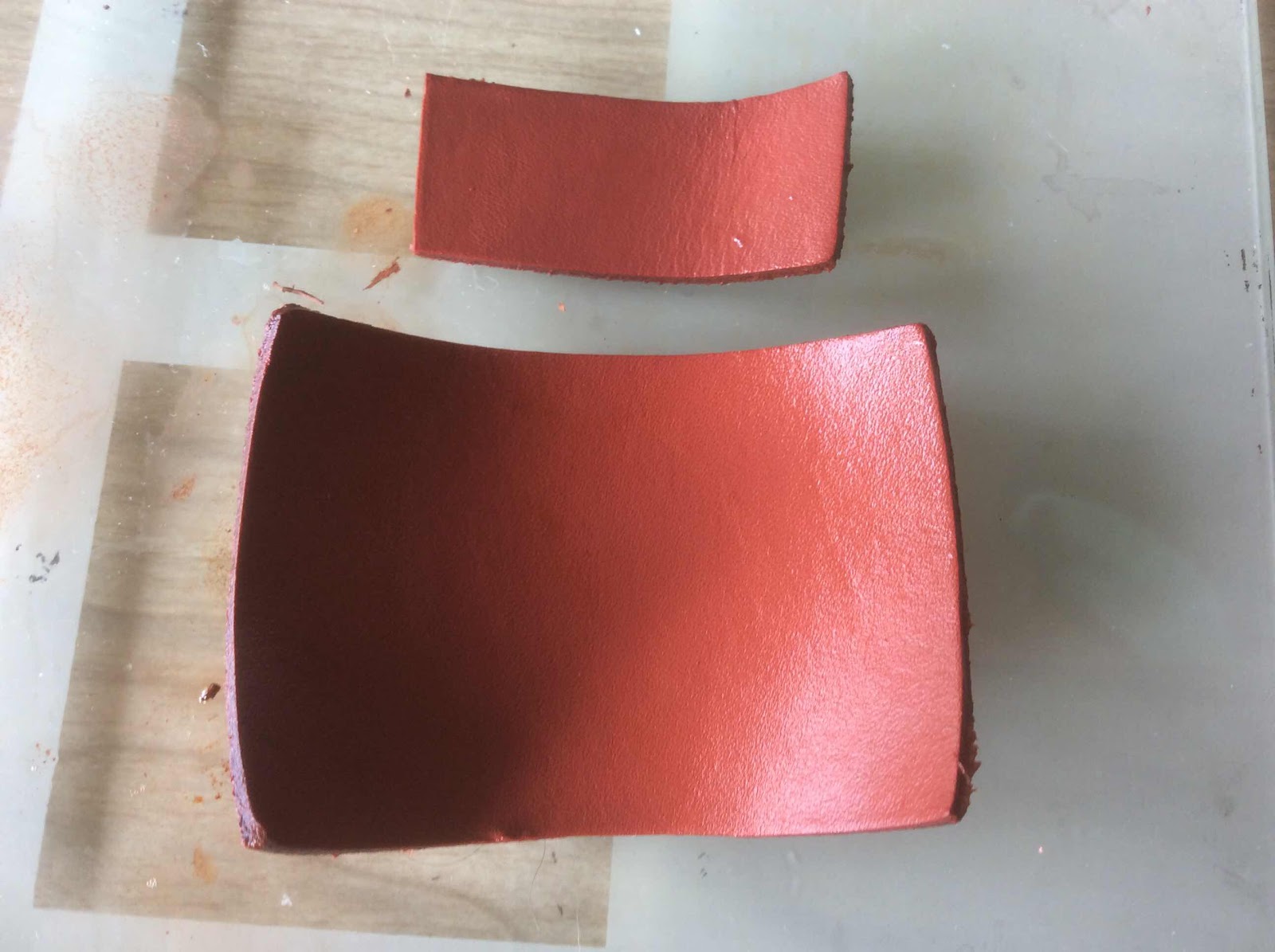
26th August: above, second generation dye bath; below, first generation dye bath
From the 23rd to the 26th, the leather continued to emit some bubbles. Come the 27th, the bubbles were gone and there hadn’t been a significant change in the colour, so I pulled the leather out for the last time.
27th August, first generation dye bath front (above) and back (below)
27th August, second generation dye bath, front (above) and back (below)
I then placed the leather between two sheets of glass to dry, as they had curled in my jars. Come the 9th of September, my leather pieces were dry and flat, but not nearly as red.
9th September, dried dyed leather (2nd generation dye bath left, 1st generation dye bath right)
I then rinsed the pieces, and was pleased that none of the pigment which had dried in the leather leached out in a rinse. I left the pieces to dry again between glass. Come the 19th of September my experiment was finished. The leather was not a rich red, I had hoped for, but it was definitely redder than my leather was originally.
Finished leather on 19th September
How it looked at the start
Result? A little disappointing
Despite the inclusion of the roots in the second generation dye bath, the first generation leather is rightly a little more pigmented.
But why wasn’t my leather a rich red? Perhaps I needed more madder root. Maybe it was used to dye leather a different way. I should investigate that.
Maybe my expectations were too high. I looked at the blog which I had gotten some guidance from, and he too was a little disappointed with his outcome using chamois, which appears to have taken up more pigment than my leather, but not by terribly more.
With the research being done into colour in antiquity, we are realising that the Graeco-Roman world was highly coloured - perhaps I expected too much of the madder as a result of this. The one case where I know red leather was used was for the Pontifex Maximus’ shoes, mainly because this tradition has continued up until Pope Francis. I am keeping my eyes peeled for any colour found on ancient representations of the Pontifex Maximus.
Discussions of colour in ancient literature is highly fraught as terminology in antiquity differed to that of today. Seeing dye work carried out with murex alone today in Tunisia has also shown me that “Tyrian purple” could mean a great variety of colours (I’ve seen blue through to deep purple to a mauve, all depending in the material dyed and the species of murex) as we consider them today. There is a chance that this pinkish colour was considered a red, or was what was meant when referring to the “Rubia with which hides were dyed” which doesn’t actually say red, and my expectation of RED is the problem.
I kept some of my rootball aside to dry under my house, and I tend to revisit this issue again sometime in the future; in the meantime, I am amusing myself with imagining Julius Caesar wearing pink shoes in Rome.


Leather Dye
ReplyDeleteMac-Lace Leather - Brisbane leather and leathercraft supplier. Shop online for tools, hides, hardware, stitching and more or visit us in shop at Cleveland.
That is from whom I purchased the leather for this experiment.
Delete